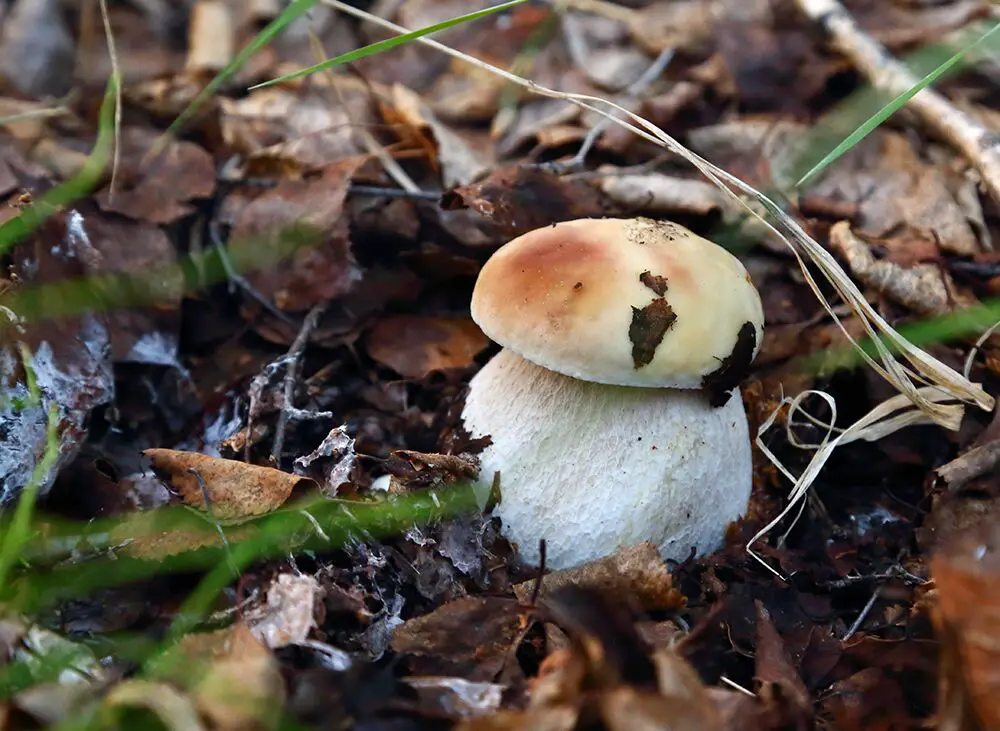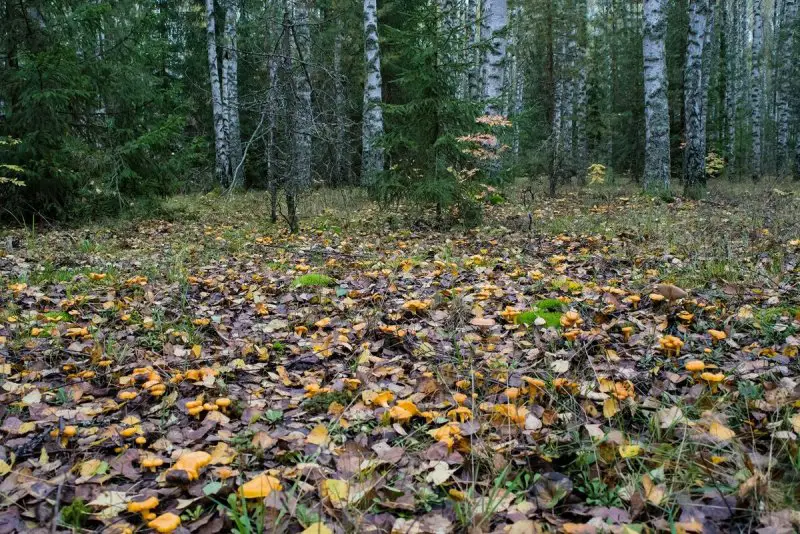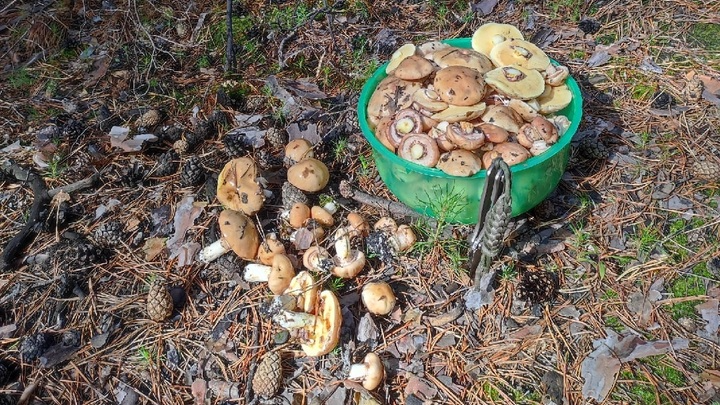Mushroom enthusiasts often anticipate the arrival of a gentle rain, knowing it could mark the beginning of a fruitful foraging expedition. But how long after rain do mushrooms grow? Understanding the dynamics of mushroom growth after rainfall can significantly enhance your chances of a successful hunt.
We will discuss detailed of how fast or quickly do mushrooms grow after rain and when to go mushroom hunting after rain.
Let’s delve into the intricacies of this fascinating process.
is rain is the ideal environment for the accelerated growth of mushrooms.

how long after rain do mushrooms grow
Table of Contents
do mushrooms grow after rain? Is rain necessary
Rain, indeed, promotes the growth and reproduction of fungi, which occurs through the spread of spores located in the hymenophore – the lamellar or tubular part of the fruiting body, located directly under the cap. However, the role of precipitation is secondary, because the main condition for the intensive growth of fungi is a high level of air humidity.
Naturally, this will not be enough, because wet weather is not yet a guarantee of a rich mushroom harvest. A whole complex is needed, which only nature can provide. And this includes the following favorable factors for growth:
- Optimal temperature. And freezing rain is not the best friend of mushrooms and russula, because in addition to precipitation, it is necessary that the thermometer does not fall below 5 degrees Celsius. In addition, there are restrictions on the upper limit, which should not exceed 25-30 degrees.
- Lighting. Mushrooms do not like bright sunlight, almost always choosing shady edges. However, this does not mean that they do not tolerate the sun at all, it is another matter that its rays must be scattered so as not to burn the delicate surface of the mushroom caps.
- Soil composition. Each variety chooses its own substrate, and if some mushrooms are comfortable on stumps and dead wood, others prefer sandy soil or forest deadwood. In any case, the soil must be nutritious, including substances that will be enough for the full development of the mycelium.
- Absence of pathogenic bacteria. There are many mycoses that pose a rather serious threat to fungi. Parasites (worms, larvae, snails) are also dangerous for these inhabitants of the forest, which settle directly in the fruiting body, eating away its leg from the inside, and then moving on to the hat.
As for the water that falls on the earth along with rain, it brings with it both benefit and harm. On the one hand, in dry soil, the normal growth of fungi becomes impossible, while excessive soil moisture is fraught with the development of putrefactive processes and rapid deterioration of fruits.
Check out guide on Grow mycelium from Spore.
how long after rain do mushrooms grow?
Winter, summer, living in pine forests or in broad-leaved forests, growing on tree trunks or directly on the ground – there are really a lot of varieties of mushrooms, and there are many differences in their development. Nevertheless, scientists managed to classify the most common and popular species into two groups, conditionally dividing them into after rain.
Fast growing mushroom Varieties after rain
Fast-growing varieties that can add 1.5 cm in one day, appearing immediately after rain. In addition, the low location of the mycelium allows representatives of this species to grow rapidly, forming entire colonies. These include champignons, mushrooms, mushrooms, russula, boletus, boletus.
- Rapid growth, up to 1.5 cm per day.
- Mycelium located low for swift colonization.
- Includes champignons, mushrooms, russula, boletus, etc.
Slow growing mushroom Varieties after rain
Slow-growing species, the maximum daily growth of which does not exceed 3 mm when they appear 5-7 days after rain. Their dense structure prevents these mushrooms from gaining more impressive pace, but their taste is excellent. So, representatives of this type are mushrooms, chanterelles, morels, milk mushrooms, and delicacy inhabitants of the dungeon – truffles.
- Max daily growth of 3 mm, appearing 5-7 days post-rain.
- Dense structure ensures excellent taste.
- Examples: chanterelles, morels, truffles, etc.
Advice! Mushroom pickers should wait a few days after the rain, because then there is a high probability of finding a large number of both representatives of fast-growing species and slow-growing mushrooms.
The only obstacle is the more vigilant mushroom pickers, who can collect all the “cream” in time.
how long after rain do mushrooms grow in summer and autumn?
The mushroom age is short-lived and many fruits become completely unusable within two weeks after their final formation. Among other things, the likelihood of parasites infecting old mushrooms is much higher, and this point should also be taken into account when determining the optimal date for forest hunting.
Do not forget about such a thing as a mushroom calendar, which is especially useful for beginner mushroom pickers. We are talking about a kind of seasonal schedule, which indicates the most favorable months for the growth of certain varieties.
Summer and Autumn Mushroom Varieties:
- Mid-June to Late October: This period witnesses the growth of prized varieties such as mushrooms, chanterelles, volnushki, boletus, and valui. These mushrooms thrive in the summer heat and continue to flourish well into the autumn months.
- July to Mid-October: Steppe champignons, morels, and milk mushrooms make their appearance during this timeframe, adding diversity to the forager’s bounty.
- Early Varieties: Boletus and russula, known for their resilience to cold temperatures, emerge as early as May. However, they can also be found later in the season, extending the window for mushroom hunting enthusiasts.
Note! It is important to remember that these intervals do not refer to the period of active fruiting, which falls on their middle part.
While the intervals mentioned above provide a general guideline for mushroom growth, it’s crucial to note that the period of active fruiting varies within each season. For instance, the peak season for porcini mushrooms occurs in late August, September, and the first weeks of October. Conversely, June and July yield fewer specimens, requiring patience and perseverance from hunters.
best time to go mushroom hunting after rain

Mushroom hunting enthusiasts know that timing is everything when it comes to foraging for these delectable fungi. But when is the optimal time to venture into the forest after a rainfall? Let’s explore.
Factors Affecting Mushroom Growth
- Variety and Density: Different mushroom varieties and pulp densities affect growth rates.
- Temperature: Warm, moderate rains promote faster growth compared to cold, heavy showers.
Ideal Weather Conditions
- Temperature: 10-20 degrees Celsius
- Humidity: Highest level
- Duration: Several days post-rainfall
Harvest Time: how long after rain to look for mushrooms
- Timing: First fruits can appear within 12 hours post-rainfall..
For successful mushroom hunting, aim for moderate, sustained rainfall followed by mild temperatures and high humidity.
when to pick mushrooms after rain?

Familiarization with the mushroom calendar will allow even the most inexperienced mushroom picker to find out when to go mushroom hunting after rain. And if the task of collecting a strictly defined type of mushrooms is not on the agenda, then there is a good chance to return from the forest not empty-handed, but with a full basket.
Things will be a little different if you need to find a specific variety (especially a delicacy). Ideally, you should have your own “mushroom” places, which no one will know about, otherwise it is quite possible to be left with nothing, having found only freshly cut stumps from mushroom legs in the thicket.
On a note! Simply put, you should not delay with a hunt if it has rained and the weather is warm, foggy, going to the training camp already 2-3 days after the first precipitation.
Do mushrooms grow after heavy rain?
Not every rain is good for mushrooms, and prolonged downpours are a clear example of this. So, in order to intensify the growth of fruits, a certain drop is necessary, and if the rain continues, then the mycelium that has begun to grow will quickly rot, even before reaching full maturity.
In addition, prolonged bad weather, combined with heavy rainfall, is fraught with the appearance of worms that are not averse to feasting on young mushrooms. After heavy rains, there is an increased chance of picking half-rotted worm mushrooms instead of healthy, strong fruits.
It should be remembered that mushrooms, like a sponge, absorb all substances from the environment. And this means that it is worth refusing to harvest in forest belts and parks located near hazardous production, as well as from fruits growing on roadsides since they attract all road dust and automobile gases.
Conclusion
We hope you may find anwer to question How long after rain do mushrooms grow?
The allure of mushroom hunting lies in its blend of science, exploration, and culinary delight. By understanding the nuances of mushroom growth after rain and navigating seasonal variations, enthusiasts can embark on rewarding foraging adventures. Remember, patience, observation, and respect for nature are the keys to a successful mushroom hunt.
